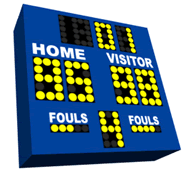Navigation

Background Research
Before Katie and I begin our own project, we wanted some background information beforehand in order to get a better idea of what we should expect when we’re done. Too be honest, we were completely surprised by the results. Katie and I both conducted researches through the Google website and there were numerous sites that helped us and numerous sites that did not. We put in various keywords such as “Overall grade point average vs. extracurricular activities,” “Student’s GPA+ extracurricular activities,” “Extracurricular activities + student’s overall GPA,” etc. When we listed these in the Google website, there were several results that came up as scholarships. For example, there were two sites that said, “Criminal Justice Scholarships” and “Biology Scholarships.” We suppose it was due to the fact that being involved in extracurricular activities adds to your chances of receiving a scholarship it looks good on college applications and shows admissions officers you’re well-rounded and responsible.
Nevertheless, we did find some websites
that did help us. There was one site
http://www.academicleadership.org/student_
research/AN_ASSESSMENT_OF_THE_PERCEIVED_BENEFITS_OF.shtml
in particular that was dedicated to an experiment conducted at Paramount high
school in Southern California. They performed an assessment of the perceived
benefits of extracurricular activities on achievement. There results showed that
there is a statistically significant difference between both athletes and
non-athletes, and music students and non-music students in terms of cumulative
GPA. On the other hand, we came across another website
http://clearinghouse.
missouriwestern.edu/manuscripts/11.asp that tested the
correlation between extracurricular activities, GPA, and self-esteem. Within
the introduction we both came across an interesting fact. An educational
psychologist from Santa Clara, Calif, stated "Participants in sports earn better
grades, behave better in the classroom, have fewer behavioral problems outside
the classroom, drop out significantly less, and attend school on a regular basis
with fewer absences.”
The last site we came across had the
most useful information. This site was the official site of the “National
Federation of State High School Associations.”
http://nfhs.org/web/2004/01/the_case_for_high
_school_activities.aspx
This site had statistical information that backed up the idea that students who
compete in high school activity programs make higher grades and have better
attendance. Based on a study of 22,000 students from the University of
Colorado, they determined students who participate in some form of
interscholastic activities have “significantly higher” grade-point averages than
students who do not. The website also contained information gathered from high
schools in North Carolina, Colorado and New Mexico. There information all
centered around the same point which is students who perform in some sort of
extracurricular activity have an overall better grade-point average and
attendance rate than those who do not participate. They also have less
discipline referrals and a decreased dropout rate. As a conclusion, Katie and I
found one last important piece of information based on a 1985 survey conducted
for the NFHS by Indiana University. They determined students participating in a
number of activities not only achieve better academically but also express
greater satisfaction with the total high school experience than students who do
not participate. Based on the information we gathered it will be interesting to
see if our results match the results of the numerous other high schools we
found.